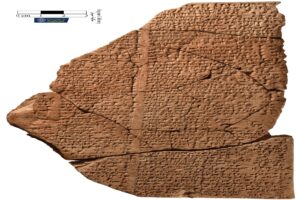Archaeologists have found an ancient city hidden for centuries in the dense forests of the upper Amazon.

One of the 6,000 platforms. Photo: Stephen Rostain
Researchers first noticed large mounds and buried roads in Ecuador’s Upano Valley decades ago but had no idea how they all fit together. Uncovering the secret of the valley was a huge operation. They used LiDAR technology to pierce through the vegetation and map an area of 300 square kilometers. The LiDAR detected hidden structures and ruins invisible to the naked eye.
Subsequent ground excavations turned up a long-lost city. Previously, we thought that the historic Amazon supported only small settlements. This shows that was not the case. Moreover, this is the oldest site ever found in the Amazon. It was built 2,500 years ago and was inhabited for 1,000 years. Tens of thousands of people lived here, giving it a population similar to that of London during Roman times.
The city comprises 15 distinct settlements, five large ones and 10 smaller ones, connected by long, straight roads. One settlement, named Kilamope, seems to have been the core of the metropolis.

The Upano Valley site in Ecuador. Photo: Antoine Dorison and Stephen Rostain
Each site has several platforms cut into the hillsides. They are approximately 20m by 10m in size and positioned around a plaza. The team unearthed 6,000 of these platforms, which may show the locations of homes.
Everything is built with earth, not stone
Unlike the Incas or Mayans, these people could not build with stone. Deep within the Ecuadorian Amazon, this material would just not have been available to them. They used earth and mud instead.
The road system particularly astounded the research team. “[It] is very sophisticated and extends over a vast distance, and everything is connected,” Antoine Dorison, co-author of the study, told the BBC.
The largest roads were 10m wide and 20km long. Creating such structures in primeval forests would have been no mean feat. They also managed to build canals to direct the vast amounts of water in the region. Ditches around the settlements may have been a protective measure against outside invaders.

The Upano River. Photo: Shutterstock
The discovery shows how much we have underestimated the complexity of ancient communities within the Amazon.
“This is older than any other site we know in the Amazon,” said Stephen Rostain, director of the investigation.”
Antoine Dorison added, “It changes the way we see Amazonian cultures. Most people picture small groups, probably naked, living in huts and clearing land. This shows that ancient people lived in complicated urban societies.”






